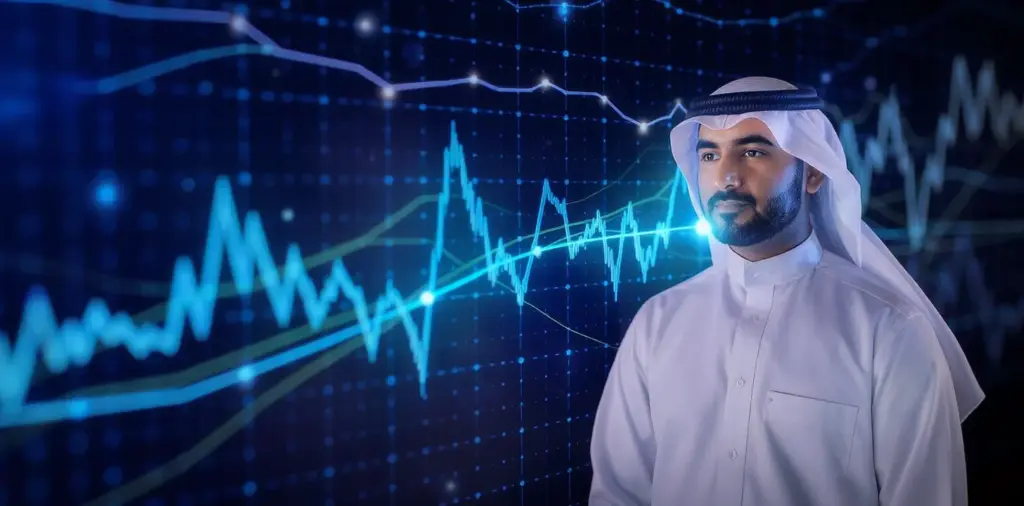Breadth in Practice: Utilities vs. Petchem vs. Mobility How GCC Payout Cultures and Pegs Shape Equity Risk

From small ponds to proper markets
The GCC moved from concentrated markets to diversified platforms. Saudi’s EM index weight >4% and Dubai’s state-asset cohort have turned regional equities from “oil-beta” into mosaics of utility-like cash payers, cyclical chemicals, and mobility/logistics operators. Oman has joined with demonstrative offers (OQEP/OQGN), and Qatar signals renewed IPO intent even as LNG megaprojects dominate the macro.
Index inclusion was the accelerant: UAE and Qatar graduated to EM in 2014; Kuwait in 2020 (with billions in passive flows). Any Saudi rule change lifting foreign caps would force another round of benchmark recalibration.
Three silos, three cash logics
A) Utilities & regulated infrastructure (yield-anchored)
- DEWA: minimum AED 6.2bn annually (through 2027), paid semi-annually. That’s bond-like in an EM wrapper.
- TECOM: codified AED 800m/year through Sep-2025, now stepping up its policy; real estate infrastructure cash flow with a public schedule.
- SEC/QEWC: semi-annuals and proposals re-establishing payout norms in KSA and Qatar. Together with Empower and Salik, they form a core “peg-duration income” basket.
Risk lens: these names are rate-beta first. With AED/SAR/QAR pegged to USD, cheaper Fed funds generally mean higher multiples; conversely, term-premium spikes can compress yields even if local operations hum along.
B) Petrochemicals (spread-beta with sovereign airbags)
- SABIC’s Q2-2025 loss (impairments + weak demand) exemplifies the cycle; still, interim cash returns persisted—signaling sponsor commitment. Sipchem paid SAR 0.50/share for 1H-2025. Borouge reaffirmed 16.2 fils/share and readied buybacks amid group restructuring. Industries Qatar remains a bellwether for Qatar’s petchem cash.
Risk lens: these are spread-beta with inventory and China sensitivity. The sovereign cushion (and explicit policies) reduces tail risk of dividend “zeros,” but earnings volatility is real.
C) Tourism, mobility & logistics (throughput-beta with scale)
- Dubai Taxi (≥85% payout), Salik (~100% of distributable profits), and Parkin (policy published) monetize the city’s mobility grid, which is riding record tourism (9.88m visitors H1-2025). Air Arabia preserves a dividend habit while gaining scale. Beyond the curb, ADNOC L&S is converting contracted backlog into EBITDA and running a progressive dividend policy (+5% p.a.).
Risk lens: these are volume-beta and policy-beta (tariffs, concessions). With Dubai’s visitor base compounding and Saudi’s 2030 tourism target at 150m, these cash engines are tied to throughput more than to Brent.
Capital recycling: the sovereign “flywheel”
The region’s sovereigns are not simply selling; they are re-allocating:
- Aramco’s 2024 follow-on (~$11–12bn) expanded free float and financed diversification just as performance-linked dividends normalized in 2025.
- ADNOC Gas pushed free float higher (paving for MSCI/FTSE inclusion) while paying the largest ADX dividend of 2024; ADNOC L&S committed to progressive dividends. PureHealth added healthcare cash to the listed mix with its first post-listing dividend.
- Oman’s OIA used OQGN/OQEP to strengthen Muscat’s dividend bench and market depth.
Result: sovereigns have built a public yield curve across sectors—investors can now ladder income from cooling networks and toll roads to chemicals and logistics.
The Dubai template (and why it matters region-wide)
Since the 2021 pledge to list ten state assets, Dubai has shown that privatizations can be income products: DEWA (utilities), Salik (tolls), Empower (district cooling), TECOM (economic zones), DTC (mobility), and Parkin (parking) all came with explicit, semi-annual dividend blueprints. Performance has been strong enough that Parkin’s IPO won regional awards and the cohort is credited with reshaping DFM’s liquidity. Expect more corporates (e.g., Alec Holdings) and subsidiary carve-outs to follow, sustaining breadth.
Kuwait’s quiet lesson & Qatar’s to-do
Kuwait’s 2020 upgrade proved that market-access tweaks can deliver billions in passive flows and a more institutional register—a reminder for every GCC venue that microstructure reforms compound. Qatar’s exchange has flagged a desire to re-activate IPOs; the fiscal and LNG backdrops are there, but delivery will determine whether Doha’s non-oil dividend bench thickens.
Where the pegs meet the payouts: a practical allocation frame
- Income core (peg-duration): DEWA, Salik, Empower, QEWC, TECOM—semi-annual cash predictable, rate-sensitive multiples.
- Cyclical income (managed spread-beta): Borouge, IQ, select Saudi petchems—explicit policies cushion the cycle.
- Throughput income (volume-beta): DTC, Parkin, ADNOC L&S—cash tied to trips/parking/ton-miles; policies are shareholder-friendly.
Watch items into 2026
- Saudi foreign-ownership reform—if majority foreign holdings are allowed, expect passive/active rotation into KSA income names, not just banks and growth stories.
- Aramco dividend normalization—with performance-linked payouts dialing down, the state’s cash needs shift to equity market recycling (follow-ons/monetizations) and to non-oil dividend engines.
- Tourism sustainability—Dubai’s H1-2025 record and Saudi’s 2030 target raise the bar for mobility/logistics earnings durability; any policy change on fares, concessions, or visa regimes is material.
The takeaway: GCC breadth is now structural. Pegs transmit the rate cycle, privatizations supply cash assets, and index math forces the global bid. The non-oil dividend story isn’t the sideshow—it’s the marquee.
